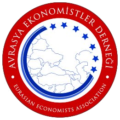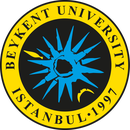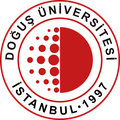
International Conference on Eurasian Economies
24-25 August 2021 – Istanbul, TURKEY and ONLINE
Paper properties
Paper ID : 2566
Status : Paper published
Language : Turkish
Topic : Macroeconomics
Presenter: Ph.D. candidate Doğaç Acaroğlu
Session : 5B Enflasyon
Inflation and Marginal Costs in Open Economies: The New Keynesian Hybrid Phillips Curve
Açık Ekonomilerde Enflasyon ve Reel Marjinal Maliyetler: Yeni Keynesyen Hibrit Phillips Eğrisi
- Ph.D. candidate Doğaç Acaroğlu (Trakya University, Türkiye)
- Assoc. Prof. Dr. Kenan Terzioğlu (Trakya University, Türkiye)
Abstract
The inclusion of the inflation rate in wage determination affects the behavior of economic actors and also positions the expected inflation as one of the main factors in determining inflation. Changes in currency parities in developing countries, which make their production dependent on imports, affect costs and prices. Moreover, changes in labor market structures resulting from free capital flows affect employment and the inflation phenomenon. This paper analyzes the current inflation, expected inflation, and output gap relations with the fuzzy linear regression method in the context of the Turkish economy, which has inflation and effective external dependency. Based on the results obtained using marginal cost instead of the output gap, policy recommendations are provided. The scope of this paper comprises the New Keynesian Hybrid Phillips curve that includes external factors. The relationship between inflation and relevant variables is statistically significant and positive, proving the fuzzy linear regression results as promising. To obtain economic stability and policy precautions, we must examine whether the use of tight monetary policies for coping with inflation leads to unemployment and whether expansionist monetary policies lead to inflation.
JEL codes: C22, C44, F41
Acaroğlu, Doğaç, Terzioğlu, Kenan (2021). "Inflation and Marginal Costs in Open Economies: The New Keynesian Hybrid Phillips Curve" in Proceedings of International Conference of Eurasian Economies 2021, pp.263-270, Istanbul, TURKEY and ONLINE.
DOI: https://doi.org/10.36880/C13.02566



